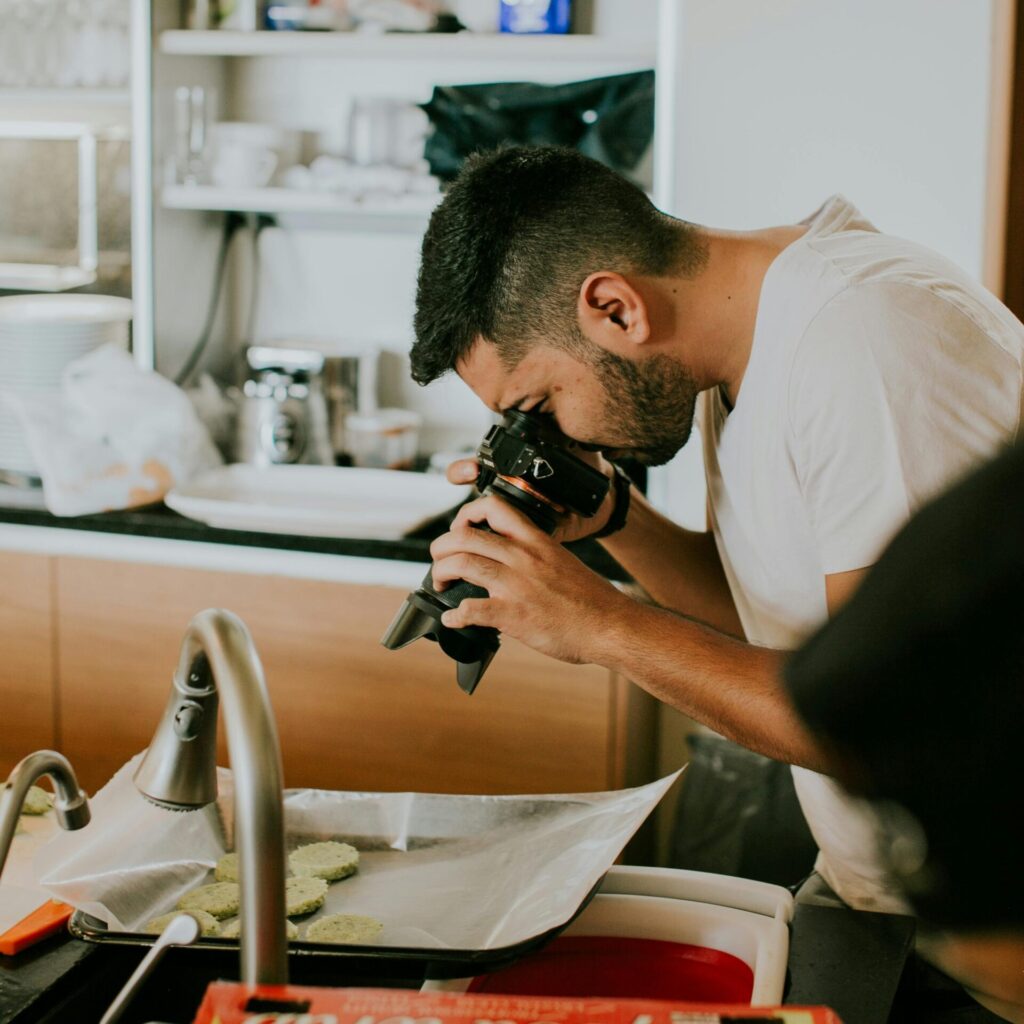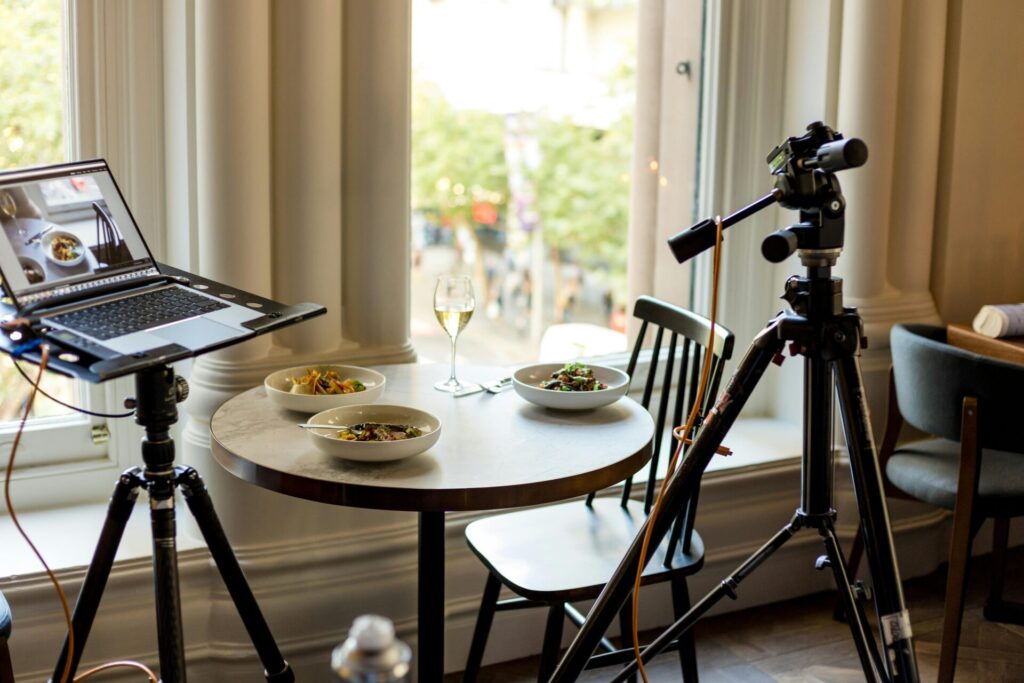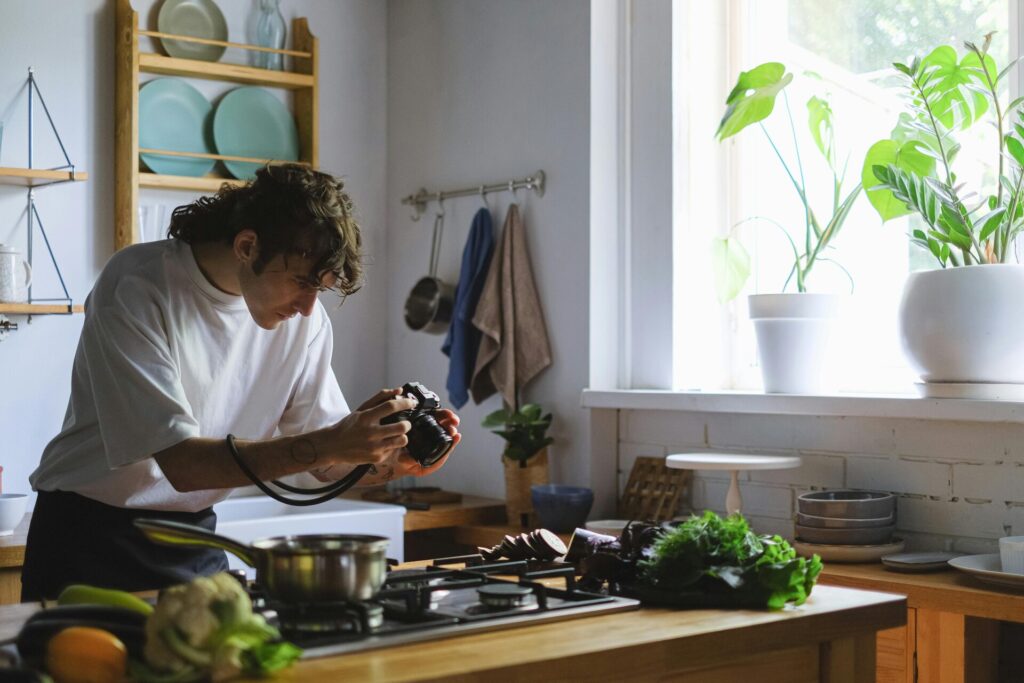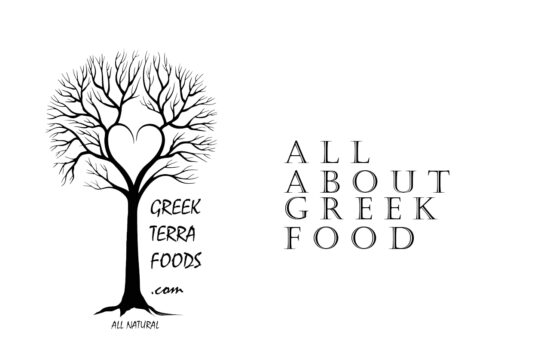We recognise the importance of visually compelling food photography in today's digital age, where a strong social media presence can have a significant impact on a business. Another purpose of this blog is to provide you with basic knowledge that will help you become a competent food photographer and improve your skills.

Food photographers specialize in professional photography capturing food images for a variety of clients such as restaurants, food companies, cookbook publishers and advertising agencies. They work closely with food stylists and art directors to create visually appealing photographs, using specialized lighting, props and techniques to showcase food in the most appetizing way. In addition, they can edit and retouch photos using software such as Adobe Photoshop to enhance the visual appeal of the final product.
To pursue a career as a food photographer, individuals usually need a strong background in food photography and a good understanding of lighting, composition and colour theory. Familiarity with various styles and styling techniques, as well as experience working with clients in the food industry, can also be beneficial. By mastering these skills, aspiring food photographers can effectively capture the beauty of food and meet the specific requirements and preferences of their clients.

Types of food photographers
There are different types of food photographers, each specialising in a different aspect of capturing food in photographs. Here are some common types of food photographers:
1. Food photographer for editorial purposes: These photographers take photos for food magazines, cookbooks and other publications. Their images are not only visually appealing but also informative.
2. Commercial food photographer: Working for brands and companies, commercial food photographers create images for advertising campaigns, menus and packaging. Their photos are often stylized to promote products effectively.
3. Fine Art Food Photographer (Fine art food photographer): Fine art food photographers create images for galleries or prints, often using unique lighting and compositional techniques to create abstract or conceptual food images.
4. Food photographers on Instagram: Specializing in creating visually stunning images for social media, Instagram food photographers curate food photos for their fans to share and enjoy.
5. Restaurant food photographer: These photographers work closely with chefs and restaurateurs to create images for restaurant menus, websites and social media platforms, showcasing dishes at their best.
6. Photographers food stylists: Food stylist photographers specialize in arranging food for photographs in an aesthetically pleasing way, working with photographers to create appealing images.
7. Travel food photographer: Capturing food images from different cultures and regions around the world

Basic skills required for success in food photography
To excel as a food photographer, you need to have a number of basic skills. These include:
- Experience in lighting: The use of natural or artificial light to enhance the visual appeal of food is vital for any food photographer.
- Food styling: the ability to artistically organise and present food in an enticing way is a fundamental skill in food photography.
- Attention to detail: Capturing the intricate details of food, such as texture, color and composition, requires a keen eye for detail.
- Technical competence: Knowledge of the technical aspects of photography, such as exposure, aperture, shutter speed and white balance, is vital to producing high quality images.
- Creativity: A creative mindset and the ability to think innovatively are essential for creating unique and visually stunning images.
- Cooking knowledge: An understanding of different cuisines, cooking methods and food trends is invaluable for accurately representing dishes in photographs.
- Communication skills: Effective communication with customers, chefs and food stylists is essential to understanding their vision and achieving desired results.

Professional development in food photography
Becoming a successful food photographer requires a combination of formal education, on-the-job training and practical experience. Here are some educational paths to consider in order to pursue a career in food photography:
Photography lessons: Enrolling in photography classes can provide you with a strong foundation in the technical aspects of photography, such as composition, lighting and image presentation. These courses are offered at colleges, universities, community colleges, vocational schools and online platforms and of course from this site by clicking on this site. here.
Culinary art classes: A deep understanding of food and cooking is vital for food photographers to capture appetizing images. By attending culinary arts classes, you can enhance your knowledge and appreciation of food and cooking, which can improve your photography skills.
Visual arts courses: Visual arts courses, such as sketching, drawing and graphic design, can help you develop your eye for aesthetics, composition and colour theory - essential skills for food photography.
Entrepreneurship courses: Running a successful food photography business involves more than just taking great photos. Understanding basic business principles, such as restaurant marketing, accounting and customer relations, can help you thrive as a food photographer.
Apprenticeships or traineeships: Gaining practical experience by working as an assistant or apprentice to an experienced food photographer can be invaluable in developing your skills and portfolio. An internship with a photography studio, advertising agency or food publication can also provide industry exposure and networking opportunities.
To increase your chances of success, focus on perfecting your craft, expanding your portfolio and networking within the industry.

